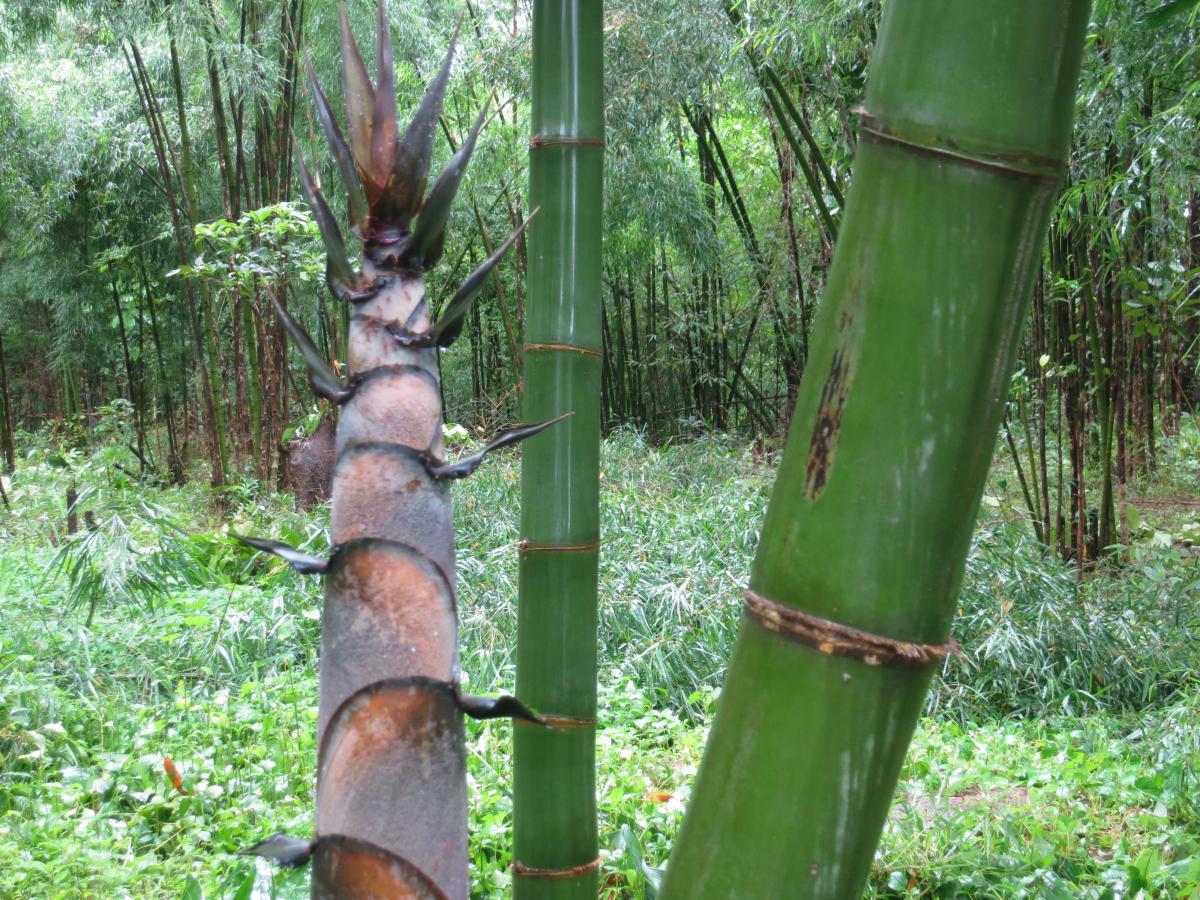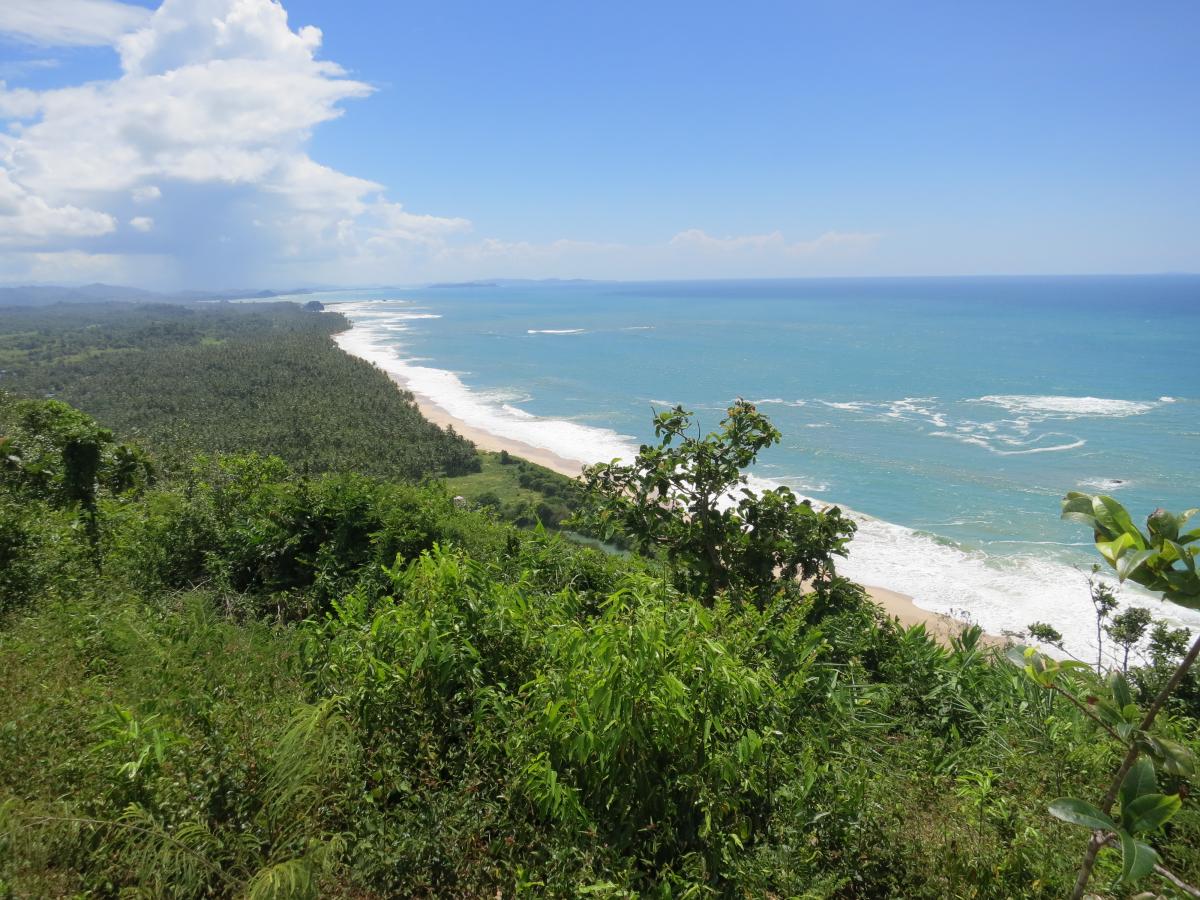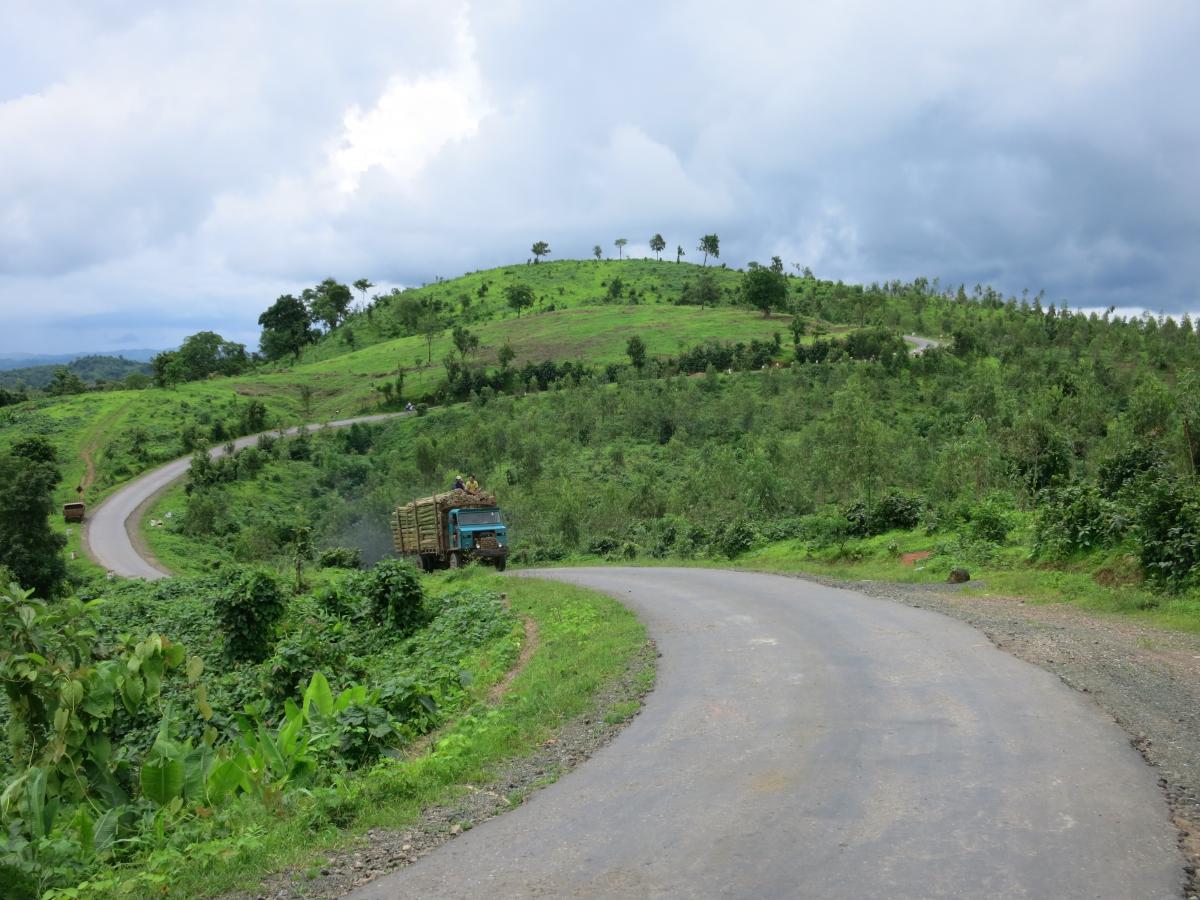Sustainable Building Materials are materials that have a low environmental impact when they are produced, gathered and put to use. They regrow relatively easily or exist in abundance and are best if they come from the areas around where they are to be used. Others may simply be recycled, reusable materials. In order to tackle what they are and what they are not, we must first understand where we are and what our natural surrounding has on offer as building materials. We must ask if the supply of these natural materials may have been affected by over-exploitation or by neglect. Yes, materials once useful, may have simply gone out of fashion, been disregarded as building materials of the poorest, thus their cultivation is no longer undertaken and they become difficult to source. This is partly the case with bamboo here in Myanmar. In Rakhine for example, the giant bamboo Wa Bo (Dendrocalamus bradisii) has become pretty hard to find.
Our Context
Rakhine State is situated in a tropical climate yet it has one extensive dry season each year. Rakhine's landscape is mountainous with tall hills that form the Arakan mountain range running from Eastern India due south parallel to the shore of the Bay of Bengal. Its highest hill is Mount Victoria (10,150 feet/ 3094meters) - though it is outside today’s Rakhine State borders.
The Arakan Mountains are overgrown with tropical mixed-evergreen and deciduous forest. In the lower parts of the hills grows dry deciduous forest that is green after the rainy season, but loses its foliage at the height of the dry season. The hills near villages are often covered with plantations of banana, teak, betel, cashew nut and some fruit trees. Rice fields surround the villages. Mangrove swamps cover river basin areas that drain the rainfall into the sea. These intertidal areas form important habitats for a variety of marine organisms and animals. This is also where the Nipa palm (Nipa fruticans) grows, out of which traditional village house thatch is made.
Then of course there is the coastline itself also running north to south, intertwining lovely beaches with rocky, stony, mountainous areas. The rocky spots where hills meet the sea are overgrown with wild bushes and smaller trees, or planted with extensive coconut groves in the flat areas around.
State of Rakhine's forests
Serious deforestation has happened over the past century. When you drive up to Rakhine from Ayerawady Division, you will be shocked to see that the only greenery growing on the rolling hills is a short type of bamboo used all over Myanmar for roofing. At least something grows abundantly and keeps the hills from being eroded, but it is highly likely that reforesting such areas will probably never take place.
In some areas there are communal forests that have enjoyed a kind of sustainable management with some protection. But even if you go inside those forests you will discover that the largest trees with precious wood have been logged illegally already. Then again you find tree plantations here and there, most often rubber, eucalyptus, teak and cashew.
However, far beyond the mountain ridges near the main road there are still original parts of tropical forest where rare animals live. Of course our lodge plans for highly monitored excursions to such forests once we are properly set-up.
Use of wood in Rakhine State
Tropical hardwoods like ironwood (Xylia dolabriformis), teak, Kachit and Kanyaung are used for building houses and monasteries. The Rakhine build their fishing boats with various hardwoods, too. Smaller trees are cut for making firewood. They re-shoot after each rainy season and, according to my own observations this is no major factor in deforestation. Bamboo and other kinds of straight, fast growing plants make for fencing poles and fences.
Wood as a sustainable building material
The fact that wood regrows alone makes it sustainable by its nature. But if sustainable forestry and replanting does not take place, then of course it isn't. So for building Arakan Nature Lodge we have decided to build with recycled old wood with the sole exception of our service building. Furthermore, we have been inspired from our research visit to Bali to start using coconut wood. Coconut trees are growing abundantly in our area. Maintaining a healthy balance between old and younger trees is important in managing a coconut grove, some tree cutting/replanting is vital for any coconut plantation to stay productive. Rakhine people, though, until now have frowned upon building anything with coconut wood. This type of wood is not used for building bridges as coconut wood does not resist the rains and is particularly susceptible to pests if outdoors or left untreated. When locals cut a very old coconut tree, they oftentimes just leave it lying on the ground. This is simply because, until now, their forests provided them with an abundance of much stronger wood choices resistant to pests like termites and resistant to fungus attacks and other climatic influences.










